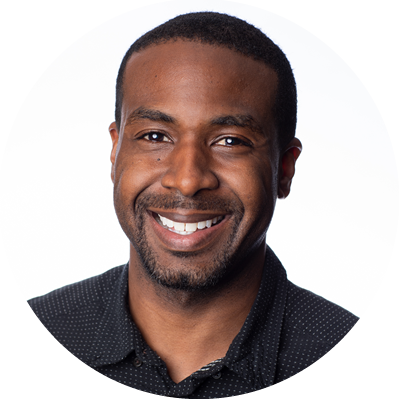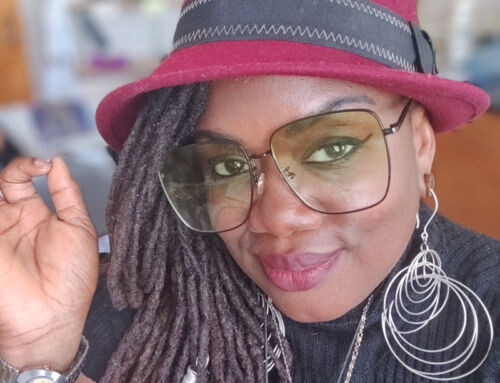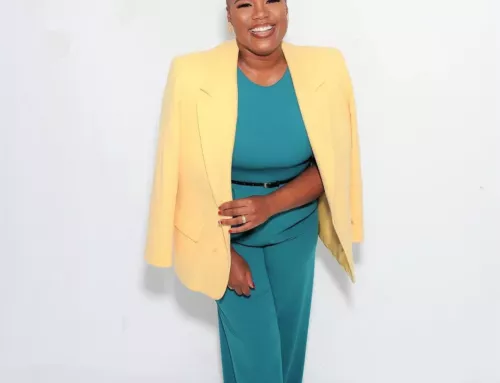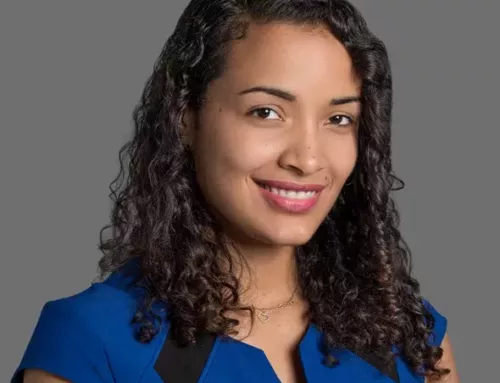
By Darrell Booker
Guest Author
After a successful career working for several tech companies and startups, EMBRACE task force member Darrell Booker still felt that something was missing in his career, which led him to pivot to work with a philanthropic purpose. Darrell now leads one of Microsoft’s most important racial equity commitments, the Nonprofit Tech Acceleration of Black and African American Communities.
As a task force member on the EMBRACE Project, Darrell contributed to the design and implementation of the research study, and now supports dissemination of its findings and recommendations.
Darrell has a personal connection with foster care, as his mom was in care from the age of two until she “aged out,” and exited the foster care system without a family. Taking the leap to philanthropy came naturally as Darrell was the first in his family to achieve many goals such as going to college and owning a home.
In this update, Darrell shares a deep dive into his unique background and perspective on the role corporate organizations can play in philanthropic causes.
What is the EMBRACE Project?
The EMBRACE Project is a research initiative by Kidsave. The project aims to understand the barriers and opportunities for Black children and youth in foster care to achieve permanency through adoption or guardianship.
What inspired you to get involved with EMBRACE?
I have always been passionate about social justice and equity, especially for the most vulnerable and marginalized groups in our society. Foster youth, especially Black foster youth are among those. They face multiple challenges and risks, such as trauma, abuse, neglect, instability, discrimination, low educational attainment, unemployment, homelessness, and mental health issues. I wanted to be part of a solution that would help them find the love, support, and stability they deserve.
Looking back, how did your path unfold to bring you here? What role did community play in helping you find your place?
My path to joining the EMBRACE Project was not a straight line, but rather a series of twists and turns that led me to where I am today. My mom was in care from 2 until she aged out. As I got older, I realized how this affected her, our entire family, and me. No one should have to go through what she did, therefore I’m committed to leveraging my skills and experience in tech to support somehow. I’m grateful for the opportunity to work with the EMBRACE project, and I hope to continue to make a positive impact for Black youth in foster care.
How did you leverage your tech background for a social cause?
I have always enjoyed the creativity and innovation that technology offers, but I also felt that something was missing. I wanted to make more of a meaningful impact with my tech experience, not just work for others so they can get wealthier. That is why I decided to shift into a more philanthropic focus, using my tech skills and knowledge to support social causes that matter to me.
What has surprised you most about the EMBRACE research so far?
One of the most surprising and sad findings is that potential families are hesitant to adopt if a child was removed from their home for questionable reasons. This means that some of the youth who are most in need of a permanent family are also the least likely to find one, because of the stigma and bias that surrounds their circumstances. This is heartbreaking, because these youth deserve a chance to heal and thrive, and they should not be judged or blamed for something that was beyond their control.
What is one thing we could all do to make a difference in the experience of Black kids in foster care?
We should provide as much mentorship for them as possible. Adoption may be an uphill battle, but we can all find ways to be supportive of their growth and development, by being positive role models, by offering guidance and advice, by providing opportunities and resources, by celebrating their achievements and talents, and by showing them that we care and believe in them. Mentorship can make a huge difference in the lives of foster youth, as it can boost their self-esteem, confidence, resilience, and aspirations.
You have also been involved with ‘Think of Us’ – a research and design lab for the social sector, working to transform child welfare. How did your emotional connection to Think of Us’ mission stay with you?
Traveling the country with Think of Us, I saw first-hand the needs of youth in care and more importantly, the very antiquated child welfare systems that were supposed to be designed to support them. Seeing those things really stuck with me. I met young people who had been through so much trauma and adversity, yet still had so much resilience and hope. I also saw how the system failed to provide them with the resources, opportunities, and guidance they deserved. I felt a strong sense of empathy and responsibility to use my skills and passion to make a difference for them.
How did your experience with Think of Us affect your interest in the EMBRACE project?
As a Black man and knowing the inequities that exist in this country, I was drawn to this project which has such a targeted mission. I learned that Black youth are overrepresented in foster care, and they face even more challenges and barriers than their peers of other races and ethnicities. They are more likely to experience placement instability, educational disruption, and aging out without a permanent family. They are also less likely to receive adequate mental health services, mentoring, and financial support. The EMBRACE project aims to address these gaps by first bringing awareness to the need and second focusing on recruiting and mentoring foster parents so these youth can have the opportunity at a “forever home.” I was also excited to be part of this project because I believe that technology can be a powerful tool for social change and empowerment.
What role do you think the corporate sector has in social causes?
Corporations are very profitable off the backs of consumers, and they have a lot of power and influence in society. It’s critical that they support the needs and interests of their consumers, especially if they wish to retain them as customers and build trust and loyalty. Corporations can do this by investing in social causes that align with their values and mission, by partnering with nonprofits and community organizations, by engaging their employees and customers in volunteerism and philanthropy, and by being transparent and accountable for their social and environmental impact.
How does your work in reducing barriers in tech also relate to your vision for Black youth in foster care?
First, tech can help government and nonprofit agencies provide more real-time wrap around support. Information sharing, resource matching, and rich analytics are just a few ways that tech can play a role in what I like to call “continuum of care.” Furthermore, technology can help to spread information to these youth quicker, leveling their playing field in access to education, career awareness, and workforce development. This will undoubtedly create more opportunities for Black youth in foster care to pursue their interests and passions in STEM fields, which are often underrepresented by people of color. By exposing them to tech skills and careers, we can help them discover their potential and prepare them for the future. Tech can also amplify their voices and stories, and help them connect with others who share their experiences and goals. By creating a safe and supportive online community, we can help them feel less isolated and more empowered.
Darrell Booker, LinkedIn




